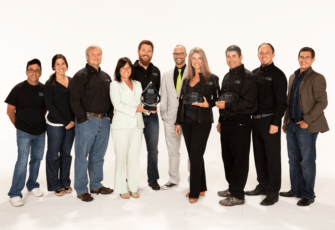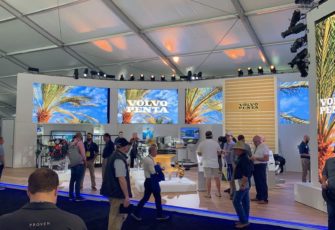Last week, I had the opportunity to present to 8,000 attendees at the RFID Journal Live! Conference and Expo 2015 in San Diego, California...
The RFID Journal Live! Conference focuses on the use of RFID technology within the creative and industrial sectors. As a Creative Director, I am always interested to see how other industries are using technology to improve their channel saturation and increase productivity and sales. The theme of the event was: Identify, Track and Manage, Everything!
 Let’s start with the basics. For those of you who aren’t utilizing RFID technology, RFID stands for Radio Frequency Identification. This technology uses electromagnetic fields to transfer data, for the purposes of automatically identifying and tracking tags attached to objects. There are three types of RFID systems: Near-Field Communication (NFC), Ultra-High-Frequency (UHF) and High-Frequency (HF). These types are further divided into two categories – Passive, no power, and Active – which are tags that are internally powered by a small battery. RFID technology has been around for a couple of decades already. It was first rolled out to the private sector at libraries and turnpike pay stations as a way to track books and pay for roadway tolls wirelessly. Essentially, each tag has a unique identifier, which can then be linked to personal data such as emails, addresses, and of course credit cards.
Let’s start with the basics. For those of you who aren’t utilizing RFID technology, RFID stands for Radio Frequency Identification. This technology uses electromagnetic fields to transfer data, for the purposes of automatically identifying and tracking tags attached to objects. There are three types of RFID systems: Near-Field Communication (NFC), Ultra-High-Frequency (UHF) and High-Frequency (HF). These types are further divided into two categories – Passive, no power, and Active – which are tags that are internally powered by a small battery. RFID technology has been around for a couple of decades already. It was first rolled out to the private sector at libraries and turnpike pay stations as a way to track books and pay for roadway tolls wirelessly. Essentially, each tag has a unique identifier, which can then be linked to personal data such as emails, addresses, and of course credit cards.
According to Wikipedia, in 2014, the world RFID market was worth $8.89 billion, up from $7.77 billion in 2013 and $6.96 billion in 2012. This includes tags, readers, and software/services for RFID cards, labels, fobs, and all other form factors. The market value is expected to rise to $27.31 billion by 2024(1), Chances are, you already have this technology in places you don’t even realize. Today’s most popular mobile phones have adopted this technology already and can be found inside the Apple iPhone 6 as well as Samsung’s Galaxy s6.
The 2015 RFID Journal Live! Conference was filled with people from around the world. Manufactures of RFID systems and companies like MIG, who utilize the technology to create dynamic and personalized experiences for audiences around the world. The expo floor was filled with manufactures who develop hardware and software.
Having attended the event in 2014, I was amazed to see how far the technology has really come, especially on the UHF wireless front. Antennas have gotten smaller and smarter too. Some of the more impressive units now have built-in computers that can be used to display content and control lighting and audio cues. The potential for this technology has become exponential. RFID tags can now be embedded into just about anything; computers, cell phones, clothing, car batteries, Aerospace components, and even children’s stickers. And the things that can be done with this technology has taken on a new face – interactive experiences, museum exhibits, tracking products and people around a retail store, inventory control and more!
 The RFID Tag technology has grown too. Some high-memory RFID tags can hold up to 4K or 8K bytes of memory. What was once a simple one-way tracking tool, now has the ability to talk three ways, from tag to antenna, from antenna to the cloud and from the antenna back to the tag all thanks to RFID.
The RFID Tag technology has grown too. Some high-memory RFID tags can hold up to 4K or 8K bytes of memory. What was once a simple one-way tracking tool, now has the ability to talk three ways, from tag to antenna, from antenna to the cloud and from the antenna back to the tag all thanks to RFID.
Multi Image Group is at the intersection Creativity + Technology. The future of RFID is apparent. It is a technology that will soon be so prevalent in our lives, that we won’t event notice it. MIG is helping to grow the industry by providing deep, immersive experiences with the technology. We look to disrupt the industry by researching, introducing and integrating emerging technologies into our projects. And we think that’s a real +.
I’m Jeffrey Poe saying thanks for reading and have a stellar day!

1. http://en.wikipedia.org/wiki/Radio-frequency_identification
For more information on the event, please click here.



